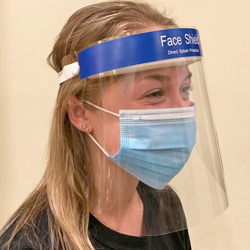This is how we have handled it at the University of
Arizona: http://risk.arizona.edu/healthandsafety/
labchemicalsafety/fumehoodexhaustsystemmaintenance.shtml
From:
DCHAS-L
Discussion
List [mailto:DCHAS-L**At_Symbol_Here**LIST.UVM.EDU] On Behalf Of
ACTSNYC**At_Symbol_Here**CS.COM
Sent: Friday, October 30, 2009 9:37 AM
To: DCHAS-L**At_Symbol_Here**LIST.UVM.EDU
Subject: Re: [DCHAS-L] Roof top exhaust fan maintenance
Policy
Ideally,
if they are maintaining the fans and people are not using the hoods
while they
are working, there should be no problem. I'd worry more about
deposition
of contaminants in the fans and ducts which sometimes
occurs.
But this is only true if the stacks and fans were properly designed and
engineered. Instead, what I see on the roofs of most university
science
buildings are rain capped exhausts or exhausts that are so low that the
emissions will put workers at risk who are on the roof. Hell, it's
even
worse than that--often the stuff is going right into the air handling
units for
the general recirculating system for the building.
If the building was built to the ACGIH Industrial Ventilation standards
and to
local department of environmental protection standards, those stacks
would be
tall enough or specially boosted to exhaust only into moving air above
the
building. The height of the stacks should not be left to
architects (who
want no protuberances above the roof line) and engineers (who want to
specify
as much off the shelf equipment as possible). Instead, the height
should
be determine by standards and regulations.
If the stack heights are proper, the workers on the roof will not be
exposed to
the emissions. If they are, maybe a redesign is the way to go.
Monona Rossol
In a message dated 10/30/2009 11:49:21 AM Eastern Daylight Time,
stefan.w**At_Symbol_Here**UCONN.EDU writes:
In general, maintenance staff working on rooftop fume hood exhaust
equipment
have indicated their concerns about being on a roof, and possibly being
exposed
to whatever is being vented.
In a more specific laboratory situation,
involving MOCVD (metal organic chemical vapor deposition), we have a
lock-out
tag-out policy, due to the severity of the toxic gases
involved.<
br>
Questions:
Does anyone else have MOCVD labs, and to
what
extent are controls in place for protection of workers on roof
tops?
Does anyone else employ a LOTO
policy?
Are roof tops key-accessible
only?&
nbsp;
Thanks for the feedback.<
br>
-Stefan Wawzyniecki, CIH, CHMM<
br>
University of Connecticut<
br>
